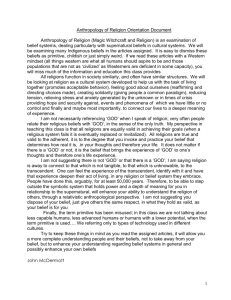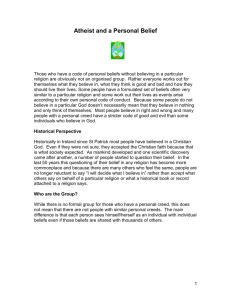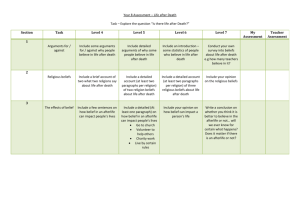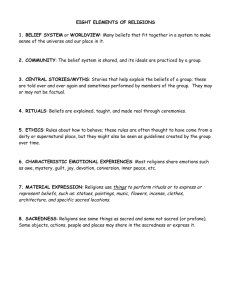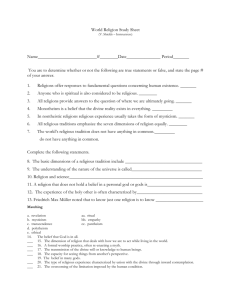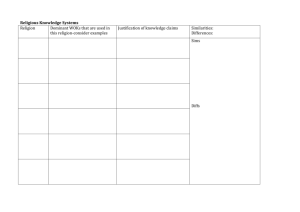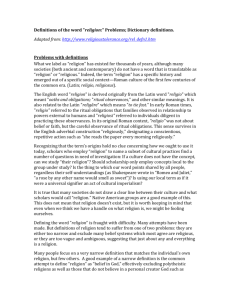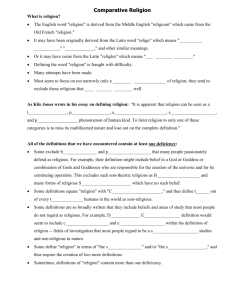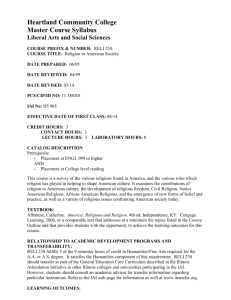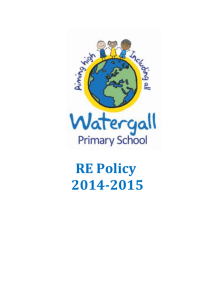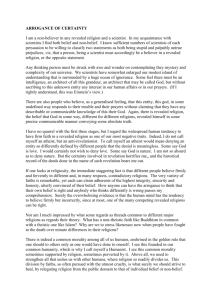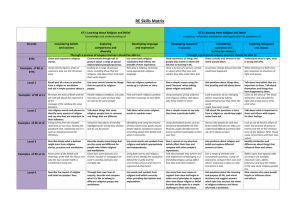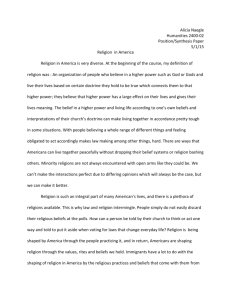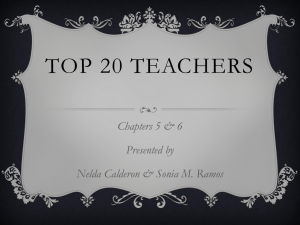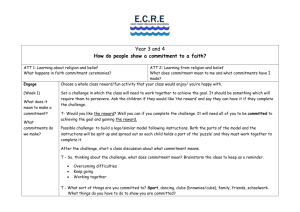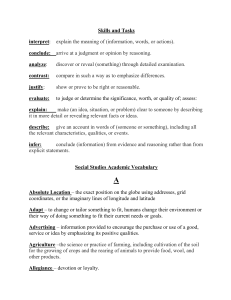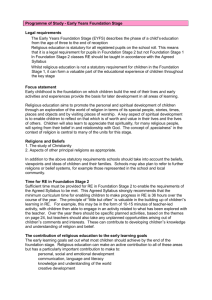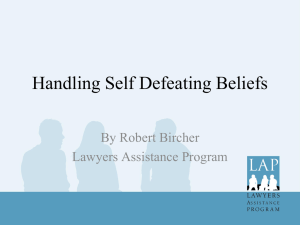Me, You and Religious Diversity
advertisement
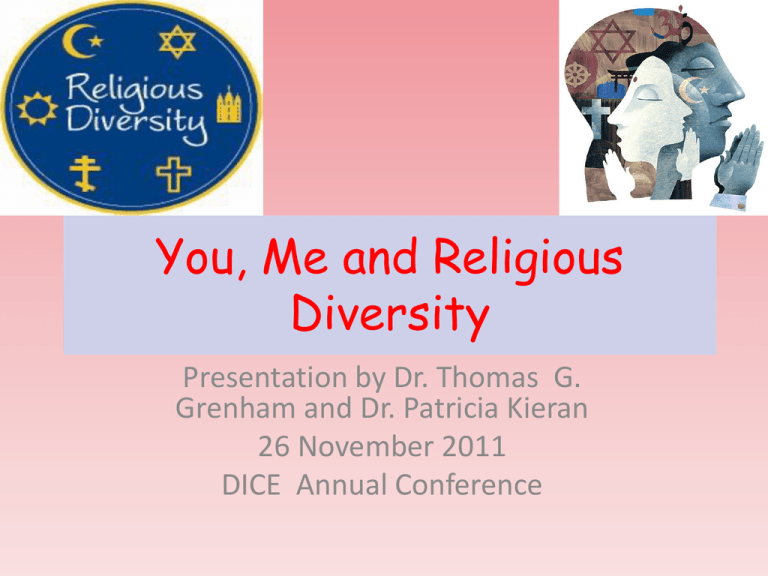
You, Me and Religious Diversity Presentation by Dr. Thomas G. Grenham and Dr. Patricia Kieran 26 November 2011 DICE Annual Conference Are We all the Same? • What is Different about us? (Does it matter?) • What is the Same about us? (Does it matter?) • What is Unique? (Does it matter?) Celebrating Diversity—Cultural and Religious Irish Classrooms are culturally and religiously diverse • Ireland has an ancient history of religious diversity. • 2006 Census shows over 10% of the usually resident population in Ireland were composed of non-Irish nationals. Results of 2011 pending. • Many International children, ESL children, children of diverse faiths in schools, many children of secular or personal beliefs. • We need to celebrate a diversity of cultures and faiths in Ireland and consequently we need to learn about cultures and faiths. What is diversity of religion and belief all about? • Fact that multiple competing belief systems and religions co-exist in society • No one religion or belief system is the exclusive or universal source of truth for the planet’s 7 bn. inhabitants • The harmonious co-existence between followers of diverse beliefs and religions is desirable • The promotion of co-operation, tolerance, as well as improved understanding and relationships between different religions and belief systems is key. Information from CIA World Facts Book Irish Primary Schools Survey 2010 • Four in every five primary schools in Ireland cater for pupils from at least two religious backgrounds, with one-in-six catering for children of at least six different faiths. • 63 % of primary schools have between two and five different religions represented in their classes. • A further 16 % have at least six different religions in their enrolments. 200 180 160 140 120 100 80 60 40 20 0 2002 tia Pr n es by te ri a n M us li m O rth od ox M et ho di st O th er N o re li g io n C hr is of I 2006 C Thousands Ireland: Religion, 2002 and 2006 – 2011 Census results pending Six reasons for teaching about religious diversity and beliefs in primary school: 1. To help children refine their own beliefs 2. Anti-racist argument – eliminate prejudice & ignorance 3. To prevent conflict –John Bowker states that religion is likely to cause future world conflict 4. To prevent indoctrination – not to educate children about religion/belief would be to inculcate an antireligious/belief bias 5. To live out the requirements of being a good human person as Agnostic/Atheist/Buddhist/Christian/ Hindu/ Jew/Muslim/ Sikh etc. Pluralism • Living with distinct life-giving differences Creating a Pluralist Society? Is there a basic common understanding of who we are and how we belong? A Shared Vision beyond Tolerance Provisional Report from the Forum on Patronage and Pluralism Nov 2011 • RE timetabled to facilitate ‘opt out’ • Every school should have a display wall on which all beliefs in the school could be represented. • World Religions Ethics and Beliefs (ERB) should be taught in all schools. • Primary schools should celebrate festivals of different beliefs. The Human Person as Starting point— can we agree? Six Principles For Effective Dialogue Among Religious Traditions and Belief Systems • A conviction within a tradition; • Mutual respect and trust; • Listening and not just hearing the other’s perspective; • Kenosis – an emptying out of particular religious/cultural prejudice and stereotyping; • An understanding of plurality and diversity that is conducive to inclusive conversation; and • Appropriate conflict management Fundamentalism • Definition-essential ingredients for cultural and religious identity become embedded and inflexible • Sectarianism—Mine is better than Yours! • Over identification with primary narrative • Not much room for dialogue as this position tends to see themselves as orthodox • Little or no tolerance of the different other Is Fundamentalism a Threat? Religious Education • Eliminate sectarianism • Promote respect of life-giving differences • Accept, Appreciate, Celebrate the lifegiving gifts of the other • Achieve tolerance and go beyond it Shared Spirituality Critical Religious Education Faith seeks Understanding • Faith and Reason are Compatible Conclusion: Christian Examples of Religious Diversity and Strategy for Inclusion • Many Biblical Texts about Inclusion • The Good Samaritan • The Woman Taken in Adultery
